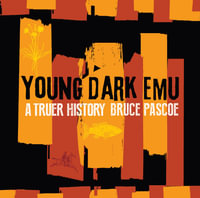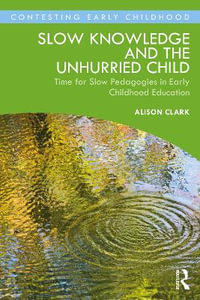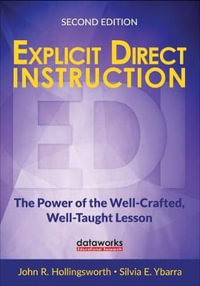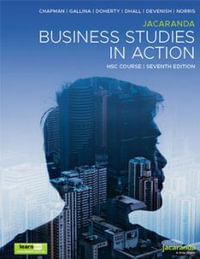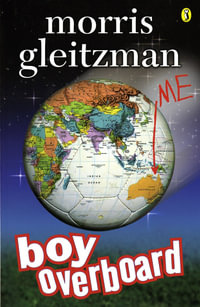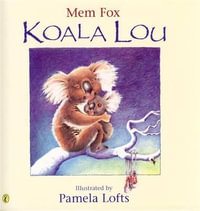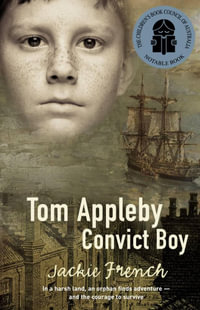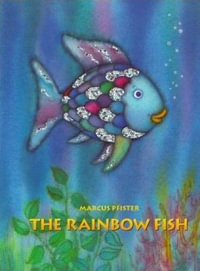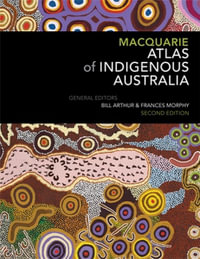
Turning on Learning
Five Approaches for Multicultural Teaching Plans for Race, Class, Gender and Disability
By: Carl A. Grant, Christine E. Sleeter
Paperback | 9 October 2008 | Edition Number 5
At a Glance
368 Pages
Revised
23.9 x 19.2 x 1.4
Paperback
$436.25
or 4 interest-free payments of $109.06 with
orAims to ship in 10 to 15 business days
Chapter 1 What Turns Your Students On? 1
Concerns and Challenges 7
The Plan of the Book 8
The Organizational Plan 9
References 10
Chapter 2 Teaching the Exceptional and Culturally Different 11
Bridges to the Curriculum 12
Expectations for High-Level Learning 12
Learning Styles 13
Relevant Curriculum 15
Skill Levels 15
Language 16
Success Stories 17
Relationships With Students 17
Connections With the Home and Community 18
Action Research Activity 2.1 18
Learning Styles 18
Action Research Activity 2.2 20
Students’ Experiential Background 20
Action Research Activity 2.3 20
Dialect Difference 20
Action Research Activity 2.4 22
Interpersonal Communication Style 22
Lesson Plans
Our Grandparents Will Always Be Special, Grades K–1, Social Science, Literature, and English Language Development 23
Sentences, Subjects, and Predicates, Grades 2–4, Language Arts 28
The Importance of Math to Everyday Life, Grades 4–8, Mathematics 32
Scientific Problem Solving, Grades 5–8, Science 35
A Cultural Human Being Presentation, Grades 5–12, Computers, Social Studies 37
PC 40
New Presentation 40
MAC 40
Project Gallery 40
Lesson Plans
Word Usage, Grades 6–12, Language Arts 42
Mong History, Grades 8–12, Social Studies 46
Writing a Five-Paragraph Essay, Grades 9–12, Intermediate levels of ESL 50
Functions, Grades 9–12, Algebra 55
Polymers, Grades 11–12, Chemistry 58
Cardiovascular Health, Grades 10–12, Health 62
References 65
Chapter 3 Human Relations 66
Primary Concerns of the Human Relations Approach to Teaching 67
Cooperative Learning 67
Attitudes, Prejudice, and Stereotyping 68
Personal Feelings 69
Individual Uniqueness and Worth 70
Cross-Group Communication 71
Action Research Activity 3.1 71
Stereotyping 71
Action Research Activity 3.2 74
Sociometric Survey 74
Action Research Activity 3.3 74
Name-Calling 74
Action Research Activity 3.4 76
Sex Stereotyping 76
Lesson Plans
Paper Flowers, Grades 1–3, Art 78
Toys, Grades 1–3, Mathematics 80
Global Cooperation, Grades 3–4, Social Studies 83
The Life Cycle, Grades 3–4, Science 86
Bones and Muscles, Grades 3–5, Health 88
Westward Ho!, Grades 4–6, Social Studies 91
Billboards and T-Shirts, Grades 4–9, Language Arts, Art 94
Luminescence or Incandescence?, Grades 5–10, Physical Science 96
Class Meetings, Grades 1–8, Social Studies 103
Introductions and Stereotypes, Grades 7–12, Social Studies/Humanities 106
Quintessentially Me, Grades 4–8, Language Arts 110
Finding Symmetry, Grades 9–11, Math 112
Solving Two Equations With Two Unknowns, Grades 9–12, Algebra 115
Factoring Polynomials and Making Friends at the Same Time, Grades 11–12, Mathematics 118
References 123
Chapter 4 Single-Group Studies 124
Perspective 125
History 126
Culture 127
Current Social Agenda 127
Issues of Particular Concern 128
Action Research Activity 4.1 128
Textbook Analysis 128
Lesson Plans
Story Writing & Story Quilt, Grades 3–5, Language Arts 133
Immigrants & Immigrants and Refugees, Grades 4–6, Social Studies 136
American Indians in Our State and American Indians and Institutional Racism, Grades 5–8, Interdisciplinary (Social Studies, Art, Language Arts) 140
Wheelchair Basketball & Wheelchair Sports, Grades 5–8, Physical Education 144
Pioneers and Women and the Westward Movement, Grades 6–8, Social Studies 147
Poster Design and Disability Awareness and Poster Design and the Voice of People with Disabilities, Grades 8–12, Art 150
Back Home During World War II and Japanese Americans—U.S. Citizens, Grades 7–12, Social Studies 154
Unit Plan: Gay, Lesbian, and Bisexual Issues 156
Lesson Plans
The Legacies of the African American Civil Rights Movement, Grades 9–12, U.S. History 158
Gays, Lesbians, Bisexuals, and Transgenders, Grades 9–12, Social Studies, Health, Human Sexuality 161
Using Science to Investigate Maternal Instinct, Grades 9–12, Biology 166
Identifying Themes in Literature, and Culture in Native American Literature 9–12, English 168
Mexican American Labor in the United States, Grades 10–12, Social Studies 174
Reference 176
Chapter 5 Multicultural Education 177
Meeting the Goals of the Multicultural Education Approach 178
Curriculum Materials 178
Curriculum Content 179
Multiple Perspectives 180
Instructional Strategies 180
Language Diversity 181
Student Evaluation 181
Grouping Students 181
Visuals 182
Role Models 183
Home and Community Relationships 183
Extracurricular Activities 184
Action Research Activity 5.1 184
How Culturally Literate Are You? 184
Answers: How Culturally Literate Are You? 187
Action Research Activity 5.2 190
Classroom and School Assessment 190
Action Research Activity 5.3 192
What Do Kids Already Know? (And Where Did They Learn It?) 192
Lesson Plans
Thanksgiving and Giving Thanks, Grade preschool, Multiple areas 193
Families, Grades K–1, Multiple areas 196
Estimation, Grades 2–4, Mathematics 200
Tie-Dyeing, Grades 4–6, Art 203
Folk and Fairy Tales, Grades 4–6, Language Arts 207
Hidden Mythologies and An Inspirational Glimpse of Aztec Mythology, Grades 4–8, Language Arts (English language development) 210
Division and Division: You Too Can Be a Mathematician!, Grades 4–8, Mathematics 217
Wholesale and Retail and Carpets and Rugs from Asia, Grades 5–8, Math 220
Composition and Perspectives , Grades 6–8, Reading, Literature, and Language Arts 223
Techniques of Painting, Grades 7–9, Art 228
Our National Anthem, Grades 6–10, Music 231
U.S. History and Hypermedia History, Grades 7–12, Social Studies 235
John Steinbeck and Literature on Migrant Workers and Exploitation, Grades 9–12, English 239
Clothing in Spanish and Clothing in the Spanish-Speaking World, Grades 9–12,Elementary Spanish 243
The Vietnam War and The Vietnam War, Desert Storm, and the Wars in Afghanistan and Iraq,bGrades 10–12, U.S. History 247
The Many Faces of Self-Interest: A Multidisciplinary and Multigrade Unit 250
Lesson Plan 1 251
Lesson Plan 2: Personal Self-Interest 252
Lesson Plan 3: National Interest 253
Lesson Plan 4: Political Interest 255
Lesson Plan 5: Self-Interest and Self-Determination of Marginalized Groups 256
Features of This Unit 257
References 258
Chapter 6 Multicultural and Social Justice Education 259
Goals and Objectives 260
Critical Questioning 261
Practice Democracy 261
Analyze Systems of Oppression 262
Encourage Social Action 264
Action Research Activity 6.1 264
Student Decision Making 264
Action Research Activity 6.2 265
Discovering Issues of Concern to the Community 265
Lesson Plans
Language Experience, Grades 1–6, Reading 266
Story Time, Grades 1–8, Reading 269
Environmental Studies, Grades 5–10, Science 275
Environmental/Ecological Studies: A Local, National, and Global Concern, Grades 5–10,Science 276
Ancient Egypt and Its Lens on Social Organization, Grade 6, Language Arts and Social Studies 279
Writing Business Letters and Writing Business Letters to Assist Homeless Children and Youth, Grades 6–8, Language Arts 286
Rate and Line Graph, Grades 6–8, Mathematics 290
City Government, Grades 7–9, Social Studies 294
Settling the West and Conflict Over Western Land, Grades 8–9, Social Studies 298
Writing for an Audience and Advertising for an Audience, Grades 6–9, Language Arts 300
Creating a Newspaper, Grades 8–12, English, Journalism 304
Twentieth-Century Social Change Movements, Grades 8–12, Social Studies 309
Principles of the U.S. Legal System and The U.S. Legal System: Justice for All?, Grade 9, Social Studies 312
Heredity and Biological Determinism, Grades 10–12, Biology 317
African American Literature and Taking Action Against Discrimination, Grades 9–12, English 321
Westward Emigration, Grades 4–6, Social Studies 326
Knowledge Is Power Unit, Grades 9–12, Guidance, Home Room Activity 331
Lesson 1: What Is Student Success in a Global World? (September) 331
Lesson 2: Preparation for Success in the Twenty First Century (October) 332
Lesson 3: Handling the Truth About Who Is Usually Prepared and Who Is Not for Success in College?—Remember, Knowledge is Power! (November) 333
Lesson 4: Two Keys to Students Success in College (December) 334
Globalization, Grades 8–12, Social Studies, Economics, Global Studies 335
The United Nation: Declaration of Human Rights, Grades 6–12, Social Studies 340
Human Rights Is Social Justice, Grades 6–12, Social Studies 341
What Is Poverty and Who Does It Effect, Grades 5–8, Social Studies and Language Arts 343
Human Rights, Social Justice, and Poverty, Grades 5–8, Social Studies and Language Arts 343
References 346
Subject Index 347
Lesson Plan Index 350
ISBN: 9780470383704
ISBN-10: 0470383704
Published: 9th October 2008
Format: Paperback
Language: English
Number of Pages: 368
Audience: College, Tertiary and University
Publisher: John Wiley & Sons Inc (US)
Country of Publication: US
Edition Number: 5
Edition Type: Revised
Dimensions (cm): 23.9 x 19.2 x 1.4
Weight (kg): 0.54
Shipping
| Standard Shipping | Express Shipping | |
|---|---|---|
| Metro postcodes: | $9.99 | $14.95 |
| Regional postcodes: | $9.99 | $14.95 |
| Rural postcodes: | $9.99 | $14.95 |
How to return your order
At Booktopia, we offer hassle-free returns in accordance with our returns policy. If you wish to return an item, please get in touch with Booktopia Customer Care.
Additional postage charges may be applicable.
Defective items
If there is a problem with any of the items received for your order then the Booktopia Customer Care team is ready to assist you.
For more info please visit our Help Centre.
You Can Find This Book In
This product is categorised by
- Non-FictionEducationTeaching of Specific Groups with Special Educational NeedsTeaching of Students with English as a Second Language TESOL
- Non-FictionEducationTeaching Skills & Techniques
- Non-FictionEducationEducational Strategies & PolicyMulticultural Education
- Non-FictionEducationOrganisation & Management of Education
- Non-FictionEducation


